In the summer of 2020, Florian Maurice departed Lyon, where he’d spent 11 years, his entire post-playing career — five as a scout and six as head of scouting — to embark on a new adventure across France.
He swapped the lakes and slopes of the Auvergne-Rhône-Alpes region for the coastline and neolithic treasures harboured within the Celtic land of Brittany.
More importantly for us, this involved swapping the Groupama Stadium for Roazhon Park as he signed on to become Rennes’ Technical Director.
This article will primarily use data and statistics to provide an overview of Maurice’s project at Rennes. Our data analysis will examine how the team has developed during the former Lyon man’s tenure at the club.
Overall club development
At the time of his arrival, Les Rouge et Noirs had just finished third in Ligue 1 — their highest-ever league finish. They’re yet to match that during Maurice’s time at the club.
His first season saw the club hastily part ways with star playmaker Raphinha, now with LaLiga giants Barcelona, where he moved after spending two seasons in the EPL with Leeds United, late in the summer transfer window.
This controversial sale was followed by a patchy run of form throughout the campaign that ultimately saw the club part ways with Julien Stéphan and bring in Bruno Génésio, who’d managed Lyon from 2015 to 2019, to steady the ship and lead the club to an eventual sixth place finish.
Génésio has remained in charge of the squad throughout Maurice’s tenure, with the 57-year-old coach now heading into his third full season at the club and expected to be fulfilling this role until the summer of 2025.
Thus far, Génésio has led the team to back-to-back fourth-place finishes following the sixth place he achieved in the 2020/21 campaign after taking over in March 2021 — not bad considering Rennes’ best-ever finish is third.
However, this hasn’t exactly been a massive overachievement, given the calibre of players at the coach’s disposal during this time.
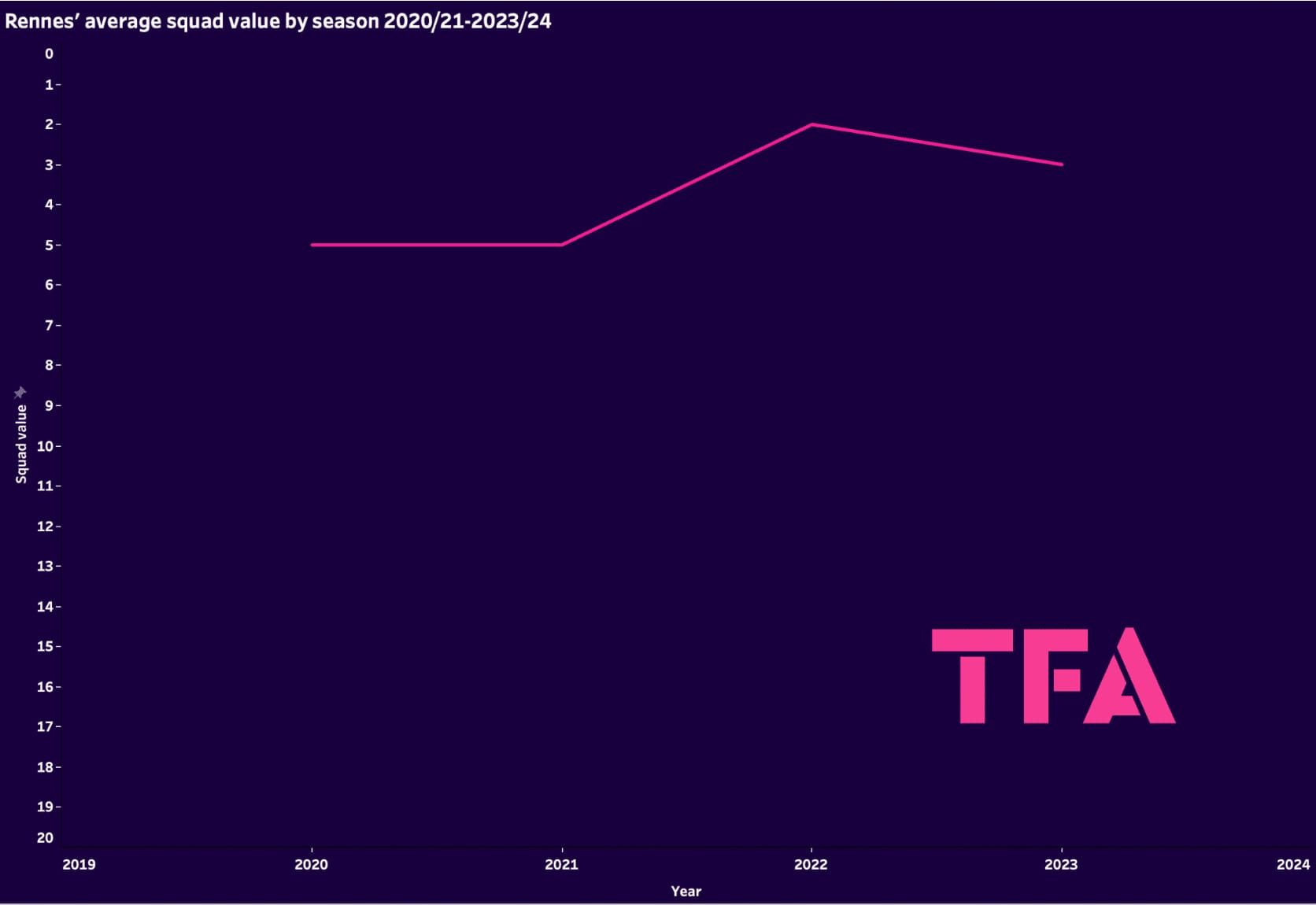
While Les Rouge et Noir had the fifth-best squad value in the league, per Transfermarkt, in both 2020/21 and 2021/22, they reportedly had the second-highest squad value last season while they’ve got the third-most valuable team in France’s top-flight for 2023/24, per the website’s current valuations.
This is definitely where the club will want to be placed in these rankings — bursting with lucrative assets.
The achievement of this can be primarily attributed to two things: the coach for managing the team successfully enough that the players have been able to show the best of themselves and accumulate such value, along with the recruitment department for constantly ensuring the club kept signing top-quality footballers to keep the level as high as possible despite routinely parting ways with their top performers.
Recruitment
The aforementioned sale of Raphinha at the beginning of the 2020/21 campaign was not a one-off or an out-of-character move. It very much fits the model that’s in place at the Brittany-based club; they will sell their top performers for the right price. Les Rouge et Noir don’t see themselves as a final destination for all their players and don’t pretend to be.
Rather, they act as a platform for quality players to showcase their abilities at a very high level of the game in order to get that big move.
During Maurice’s time as Technical Director, the likes of Édouard Mendy, Eduardo Camavinga, Nayef Aguerd, Mathys Tel, Kamaldeen Sulemana, and in this most recent transfer window, Lovro Majer, Lesley Ugochukwu and Jérémy Doku among others have joined Raphinha in leaving Rennes for perceived greener pastures.
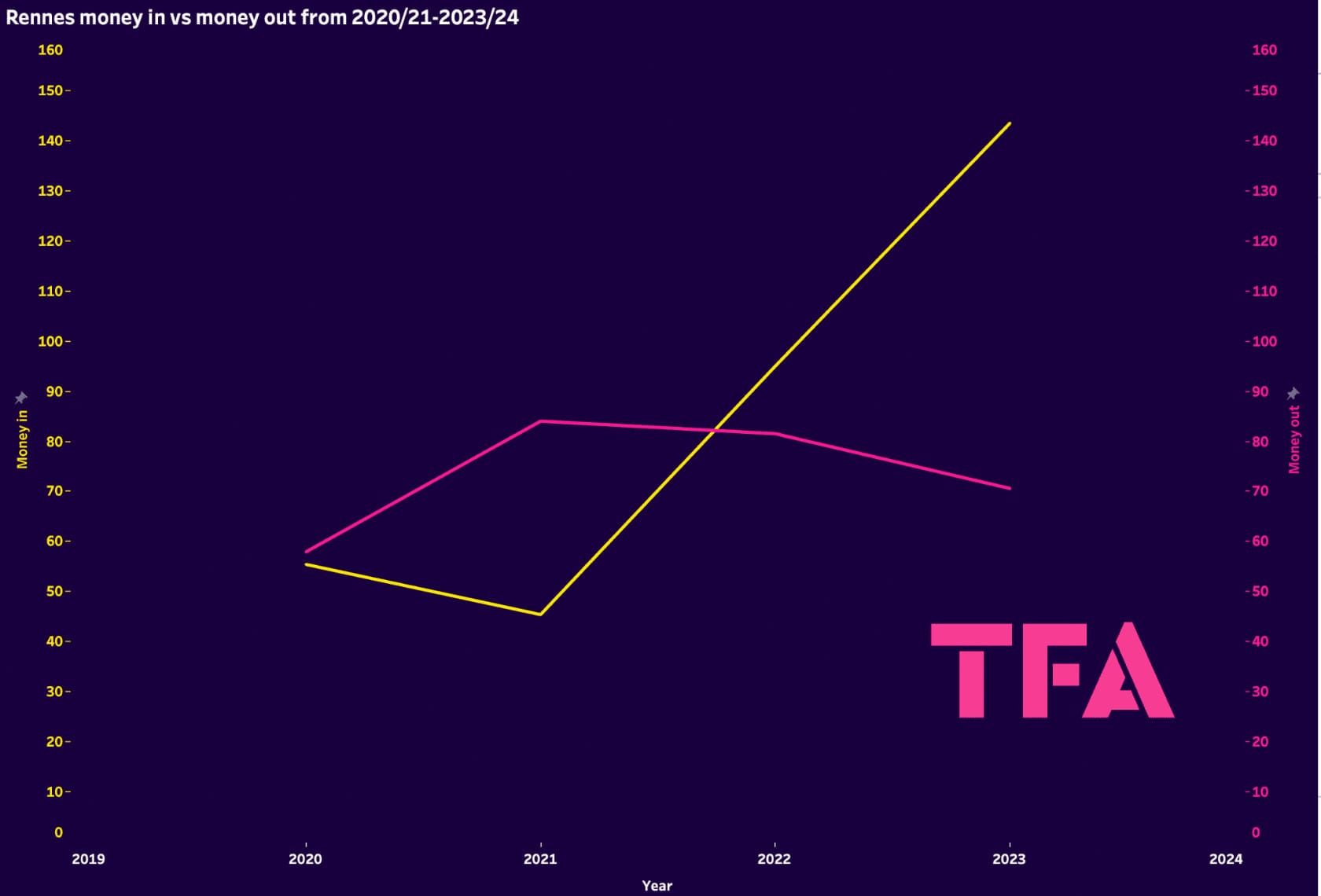
This season (so far) and last season, Rennes have made a big profit in the transfer market. Only in 2021/22 did they make a really significant net transfer loss during the Maurice era.
Overall, during the 49-year-old Technical Director’s time at Roazhon Park, Rennes have made a healthy €45.36m profit in the transfer market — making them the seventh-most profitable club in Ligue 1 for the specified time period.
So, they’ve made a big net transfer profit while losing key players and maintaining a relatively good league position over this period. But how?
Part of this sounds very simple, but only the most intelligently-run clubs seem to be able to pull it off smoothly — buying promising talents low, generating hype around them, thus inflating their transfer fee and selling when the hype is high.
Selling at the right time is something Maurice and Génésio’s former club, Lyon, have catastrophically failed to do in recent years, but it’s an area in which their current club, Rennes, thrive.
The likes of Aguerd (signed for €4m, sold for €35m), Doku (signed for €26m, sold for €60m), Sulemana (signed for €17m, sold for €25m) and Majer (signed for €12m, sold for €25m) all provide excellent examples of nice, profitable deals that Les Rouge et Noirs have pulled off over the last few seasons.
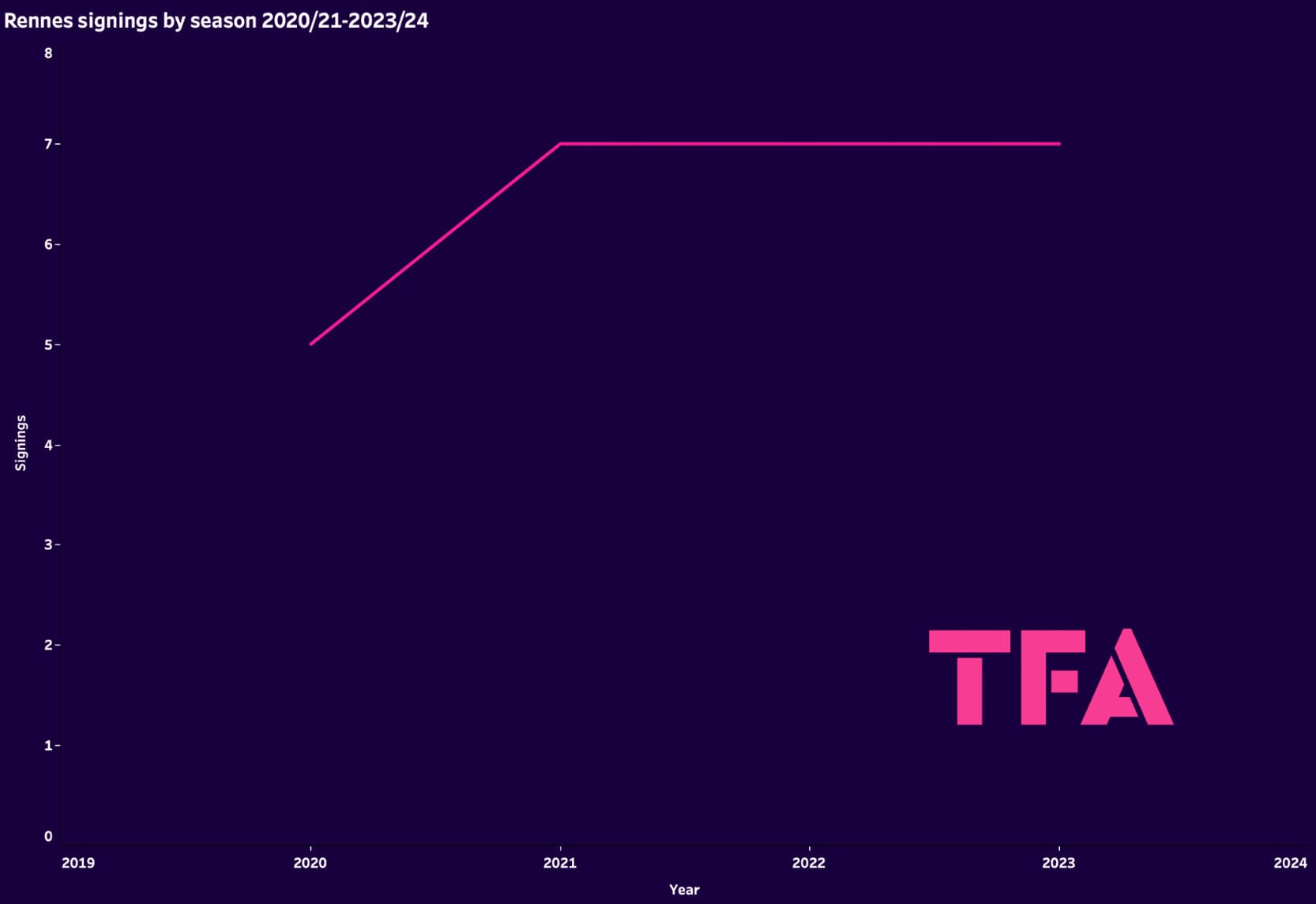
Rennes have permanently signed seven players in each of the last three seasons, the current one included. They need a steady stream of incomings as a result of the club’s model and approach to player sales, as well as just the general need to freshen up the squad. However, they maintain some control on this, ensuring they don’t go over the top regarding squad turnover and keep some consistency in the team.
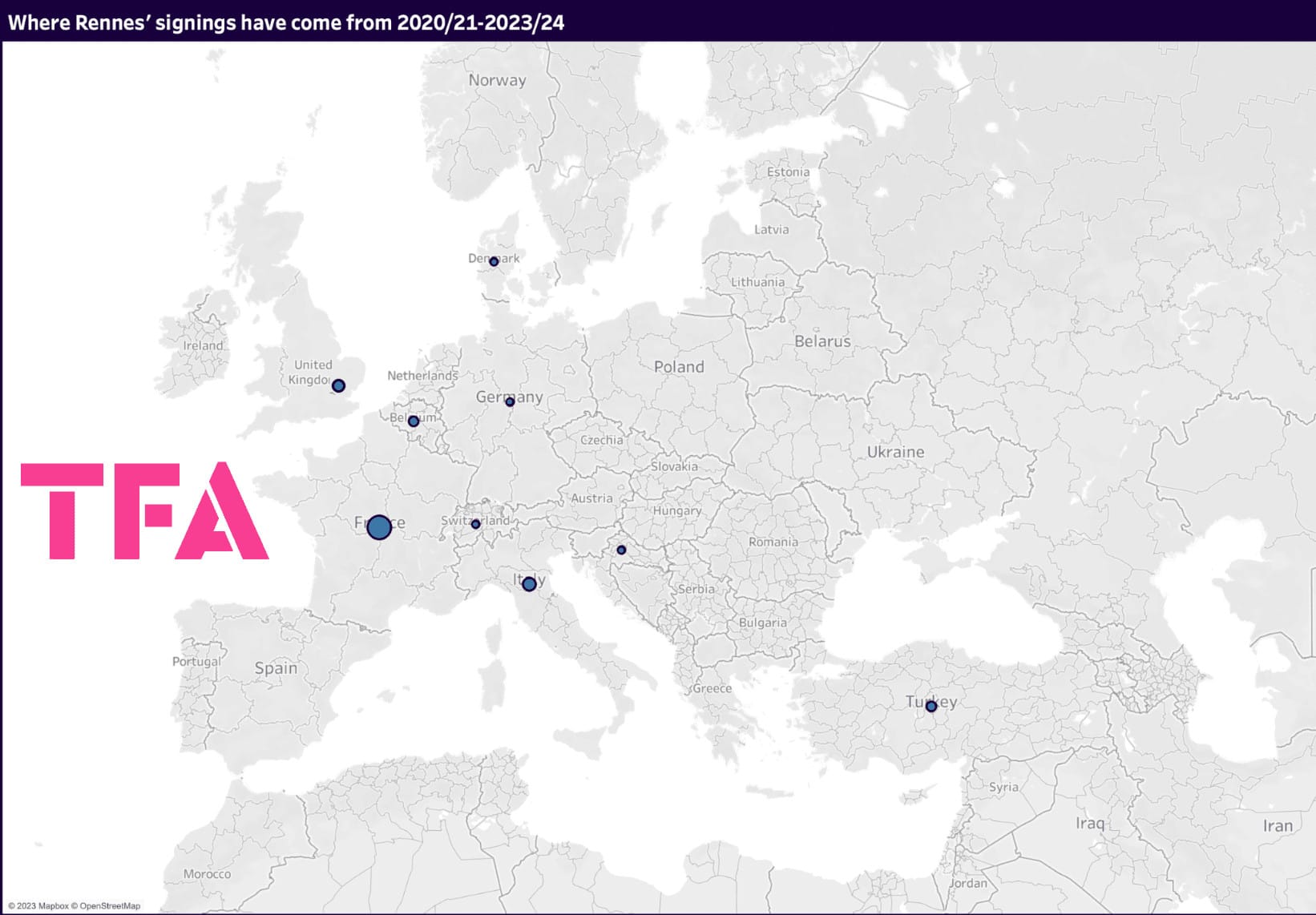
In terms of markets, Rennes have not shopped outside of Europe during the Maurice era, with the vast majority of their signings coming from France. In contrast, others are scattered around the continent, mainly coming from neighbouring countries in Western Europe.
It’s possible Rennes could be a bit more creative and explore other markets further in order to get even better deals in the future, with great value to be found in searching further afield.
With that said, it’s clear their recruitment team are highly knowledgeable about the areas from which they have been extracting their gems and have achieved great success with this approach. However, as competition inevitably heats up in these regions as other teams attempt to copy Rennes’ approach, they’ll need to be ready to find a new means of staying ahead of the pack, one of which may be to increase their presence in more untapped markets.
Youth
One last point regarding Rennes’ recruitment ties in with our third and final section of this analysis: their emphasis on youth.
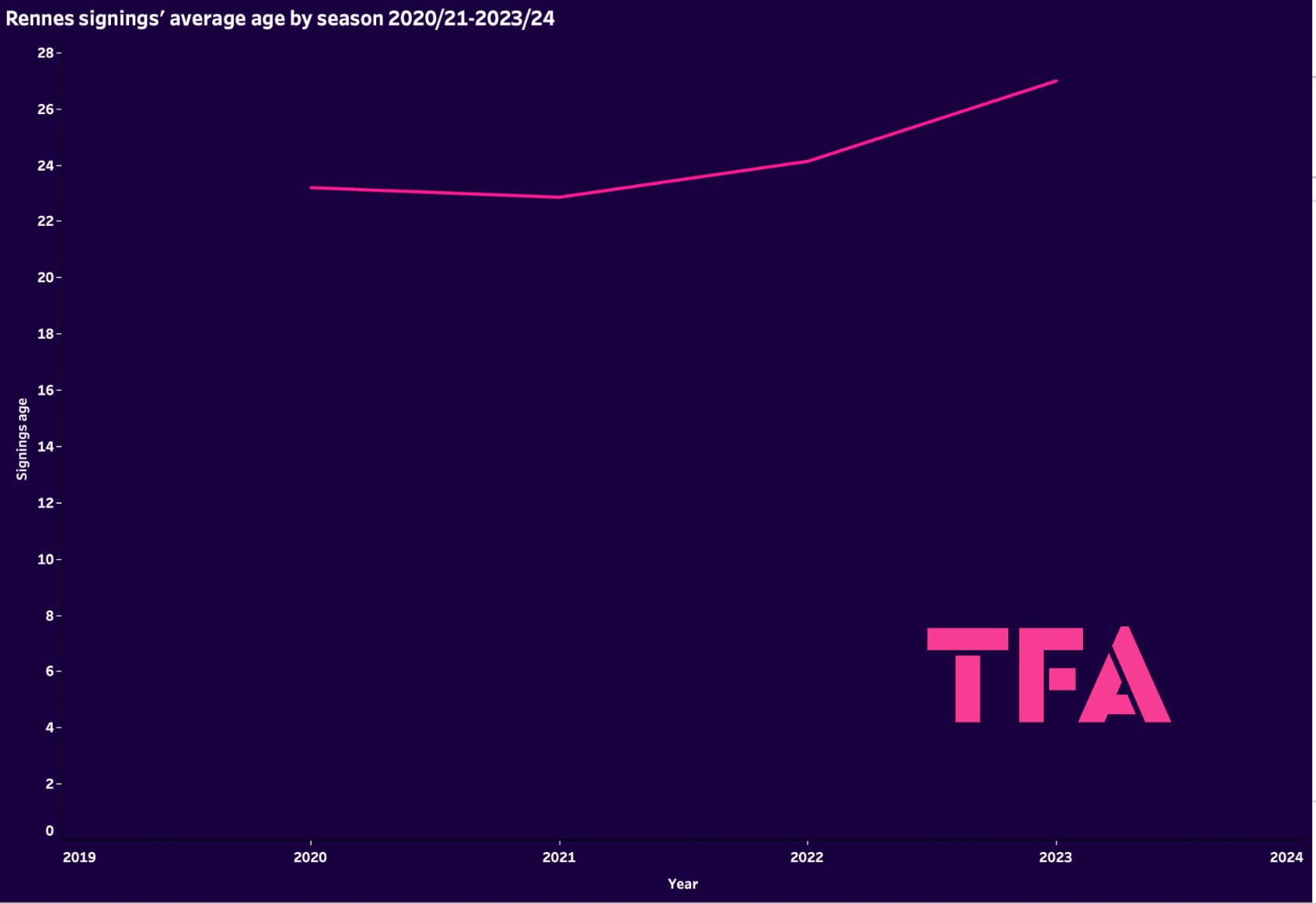
Rennes mostly sign young players. Here, in figure 5, we see the average age of their permanent signings per season during the Maurice era displayed with a line graph. In this image, we can clearly see that the average age has slowly but surely creeped up over time, reaching a peak of 27 this season so far. However, for the previous three seasons, it was 23.2 (2020/21), 22.86 (2021/22) and 24.14 (2022/23).
While the average age of their signings has increased for 2022/23, the critical point to take from this isn’t ‘Rennes just sign young players’ — they’re happy to invest in experience too, and Génésio will likely value it highly in his dressing room.
However, they will not invest heavily in older players. This summer, Les Rouge et Noir made three signings that made up the majority of their transfer budget: 23-year-old Enzo Le Fée (€20m), 25-year-old Ludovic Blas (€15m) and 21-year-old Fabian Rieder (€15m).
These three have an average age of 23 years, which is significantly less than the average of 27 for the season, which has been impacted by the signings of 35-year-old Nemanja Matić (€2.5m), 30-year-old goalkeeper Gauthier Gallon (no transfer fee) and 35-year-old Geoffrey Lembet (no transfer fee).
These are all very low-risk signings in terms of outlay on transfer fees, while two are backup goalkeepers who likely represent low-risk signings in every aspect. With this context, we can understand why the rise in ‘average signing age’ on its own doesn’t signify a change in approach at all from Rennes — they’re still just as focused as ever on keeping a low average squad age and recruiting youth with plenty of resale value.
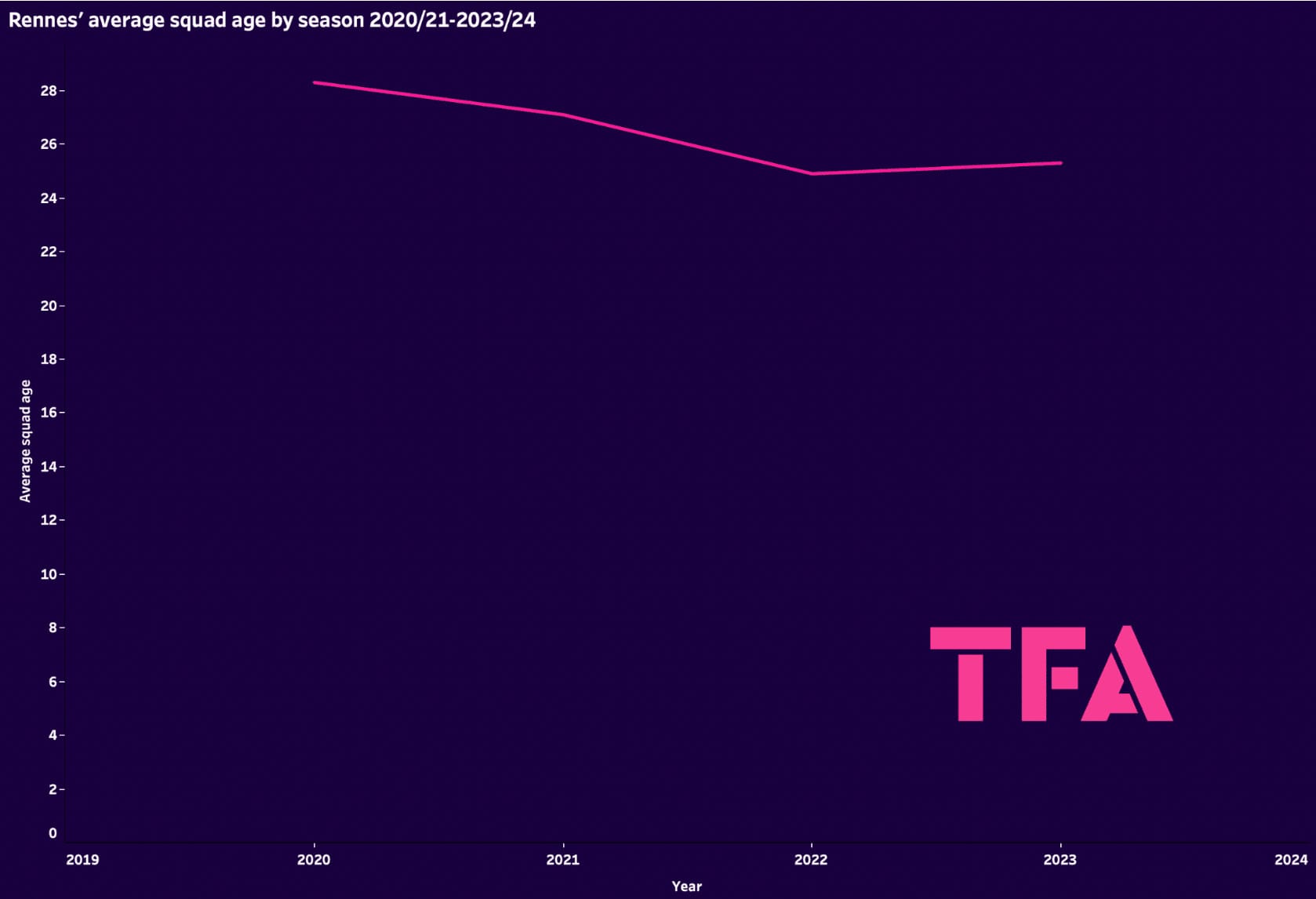
Rennes’ average squad age has come down during the Maurice era from a high of 28.3 in the 2020/21 campaign to 25.3 this season, hitting a low of 24.9 in 2022/23, when Les Rouge et Noirs had the youngest squad in France’s top-flight.
Now, it’s more than just their recruitment that goes into this. Rennes are currently making great use of their youth academy, a trend that’s been in motion for about two decades now under the ownership of François Pinault.
Per reports, only PSG invest more in their youth academy and player development than Rennes, who typically invest about 10% of their total annual budget in this area — a relatively immense amount when compared to other football clubs.
This investment has paid off, with six established members of their current first-team squad being products of their youth academy. Per Transfermarkt, these players total a combined market value of €54.3m, representing over 20% of their current squad value — a squad ranked as the third-most valuable in Ligue 1 at present, as mentioned earlier.
CIES Football Observatory recently published two posts which highlighted the productivity of Rennes’ youth academy — the first was a post titled: ‘Golden Factories’, which ranked clubs according to the total value, globally, of their academy products — Les Rouge et Noirs were ranked second in their country in this particular area.
Meanwhile, Rennes ranked in first among Ligue 1 clubs for ‘U20 employment’ — a ranking of minutes handed to U20 players.
Their study found that U20s made up 9.4% of minutes played for Rennes over the last five years — significantly higher than second-placed Lyon with 7.6%.
Speaking of Lyon, the Auvergne-Rhône-Alpes-based French football giants have earned a stellar reputation for player development and a strong academy over the years. They still rightfully have an extraordinary reputation in this particular area today. However, Rennes are very much in the conversation now when it comes to France’s top talent factories.
This hasn’t happened overnight. It’s the result of the club’s vision and consistent effort over the past couple of decades to put their faith in youth, particularly their ability to grow their own stars. Now, we’re really starting to see this strategy bear fruit — and it doesn’t look like stopping any time soon.
Still, we see further links between Lyon and Rennes beyond just the approach to youth and the apparent links between the Technical Director and current manager — two of the club’s big stars in Amine Gouiri and Martin Terrier, are former players of Les Gones, who were at the club during Maurice’s time there.
Both are very much signings in keeping with the overall strategy and club philosophy at Rennes, as outlined in this analysis of Maurice’s project, with the Technical Director facilitating the arrival of two players and a coach he’s very familiar with.
Conclusion
To conclude this analysis, it’s clear what Maurice’s primary tasks and objectives are at Rennes.
Firstly, he must balance the books and ensure a profitable approach to recruitment, signing players with high potential at a relatively low price, giving them a platform to show off their abilities at Roazhon Park and selling when the time is right and the hype is at a premium.
While doing that, secondly, he must ensure the coach has the tools available within his playing squad to have the club consistently in the European places. Champions League football is a big ask for a club that’s only finished third once in its history, but it isn’t a massively unrealistic shout, given the quality of Rennes’ squad.
Nevertheless, European football of some description is a must at this stage, and the team certainly appears good enough to achieve that if Génésio can continue extracting the best of their abilities as he has done thus far.
Lastly, Maurice must ensure the pathway from academy to first team remains clear for the club to showcase its fruitful youth academy and keep the supply line running.
These is, in short, the Technical Director’s project at Rennes, laid out and explained. In his three years thus far, it’s difficult to criticise the 49-year-old harshly as he’s essentially overseen the trajectory of the club continue upward.

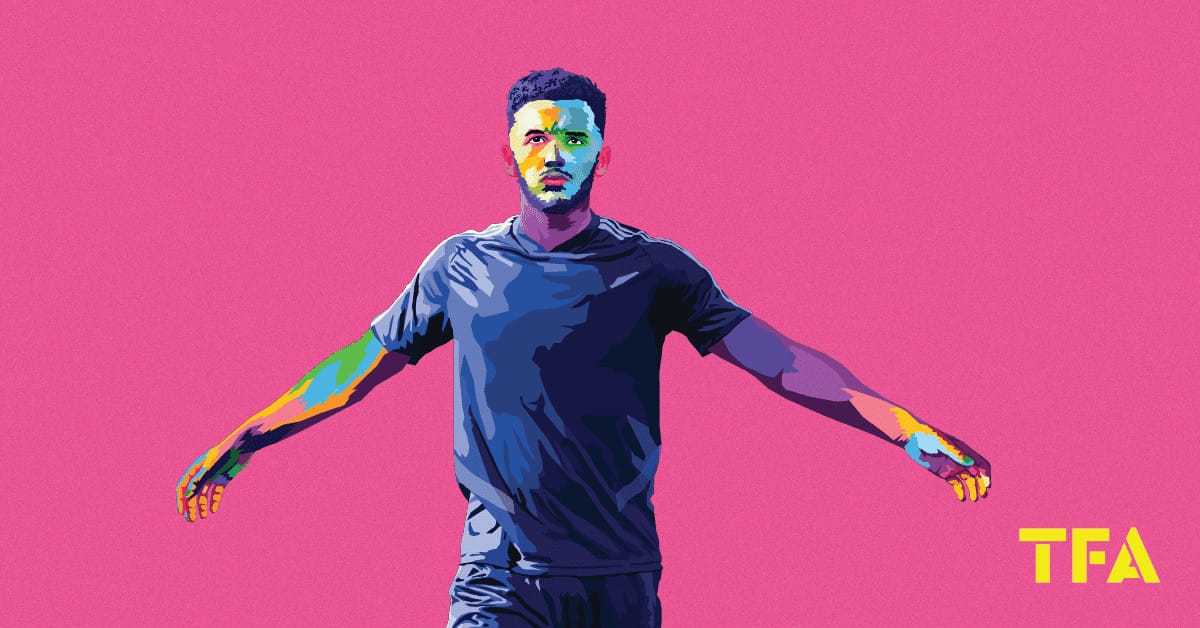



Comments